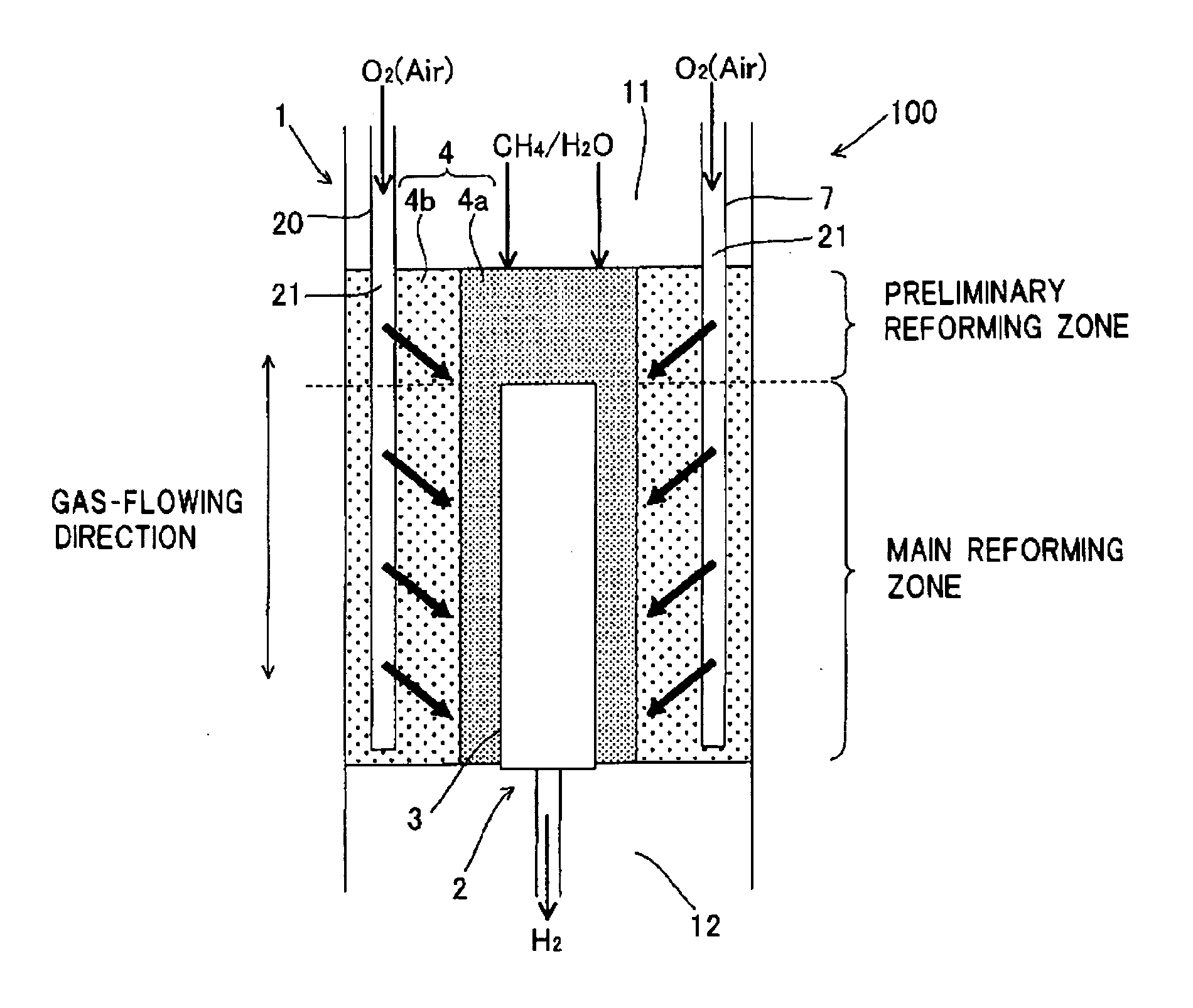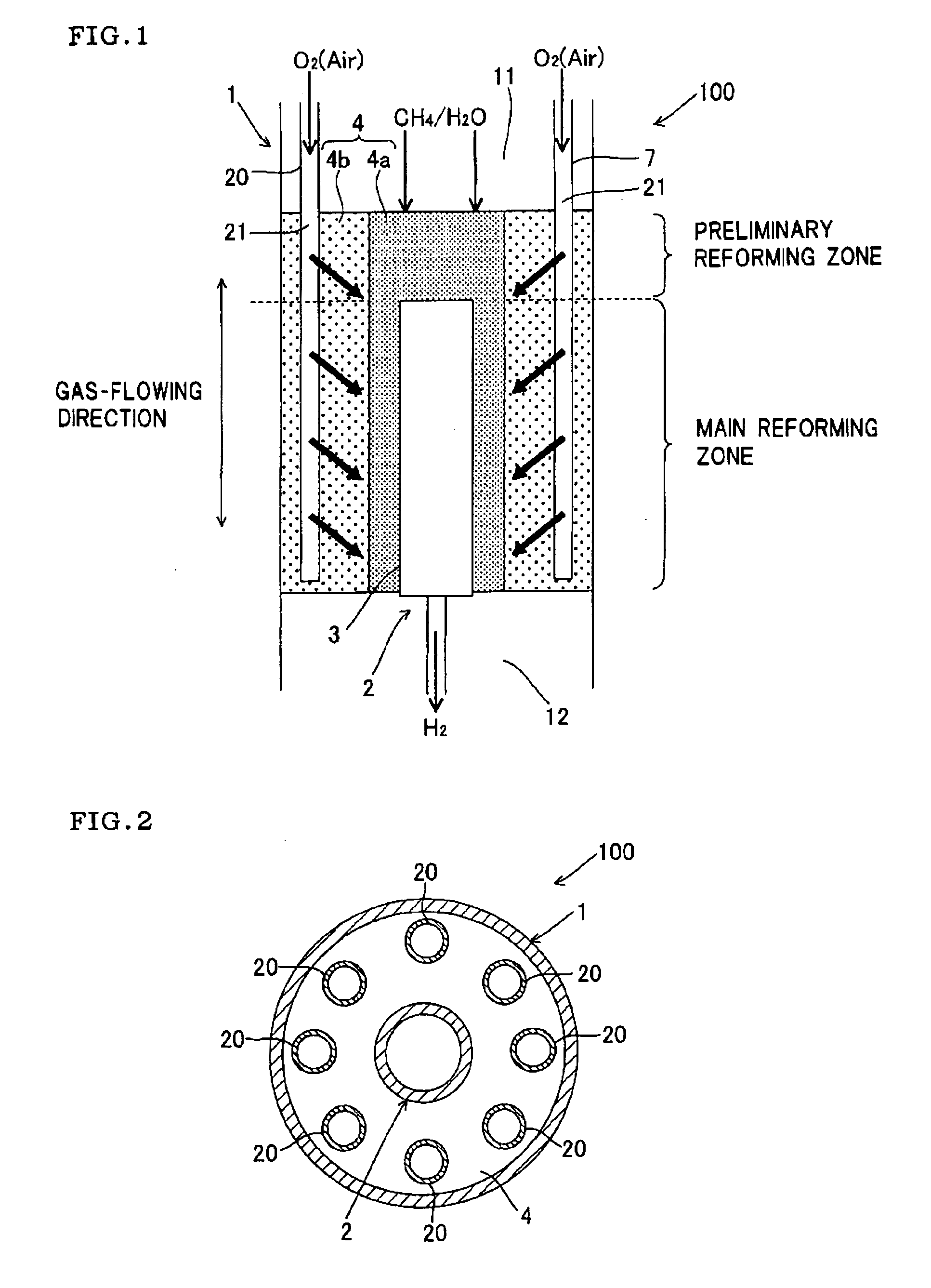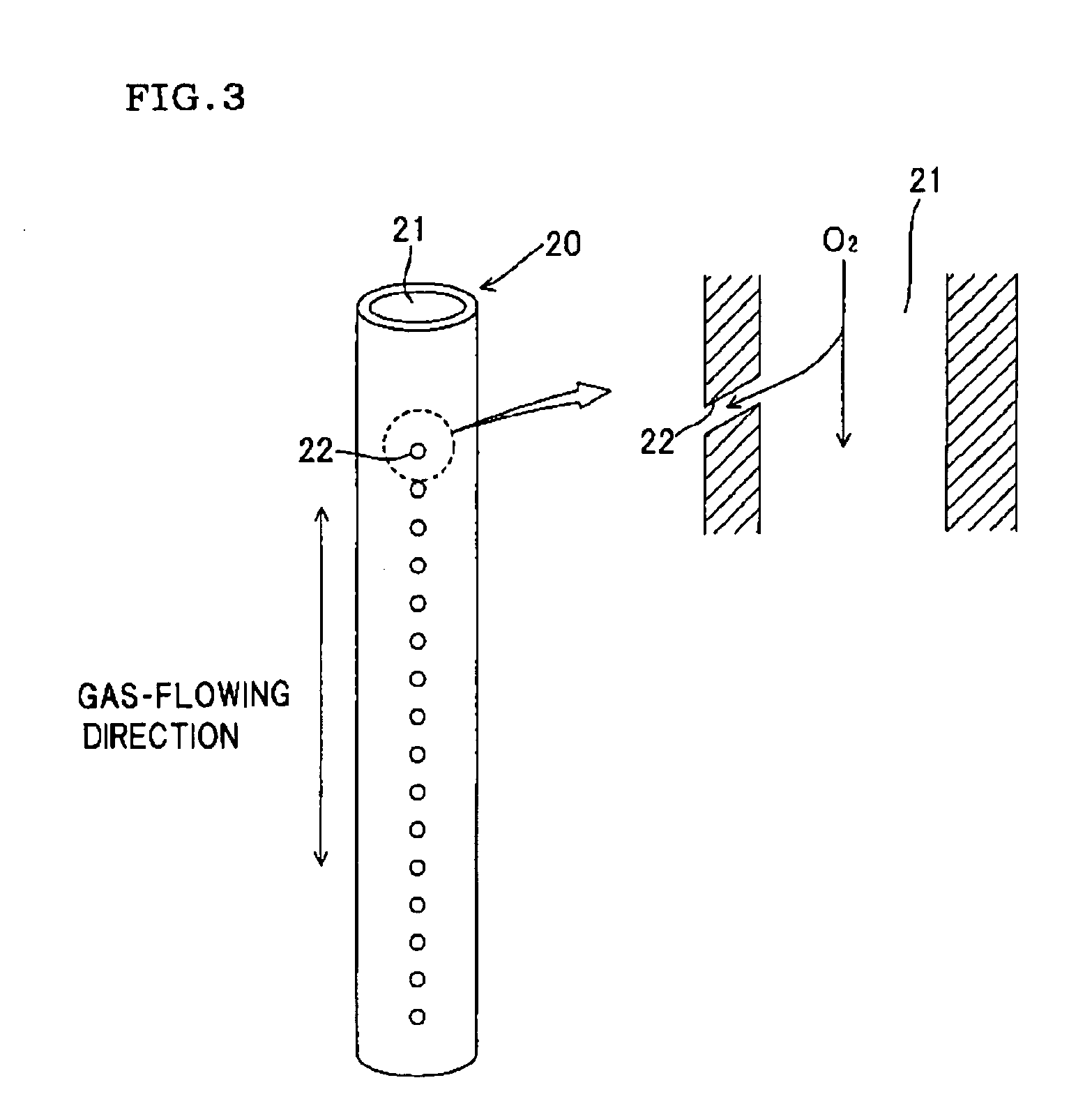Permselective membrane type reactor and method for hydrogen production
a membrane type reactor and selective membrane technology, applied in the direction of oxygen/ozone/oxide/hydroxide, chemical/physical/physical-chemical process catalysts, physical/chemical process catalysts, etc., can solve the problem of not being able to feed the generated heat to the whole portion of the catalyst layer, incurring a reduction in heat efficiency, and the temperature of the reactor exceeding the allowable limit. , to achieve the effect of suppressing undesirable local heat generation, feeding efficient heat, and promoting
- Summary
- Abstract
- Description
- Claims
- Application Information
AI Technical Summary
Benefits of technology
Problems solved by technology
Method used
Image
Examples
embodiment 1
[0025]FIG. 1 and FIG. 2 schematically show an embodiment of the permselective membrane type reactor of the present invention. FIG. 1 is a sectional view cut along a plane including the central axis, and FIG. 2 is a plan view of the reactor. As shown in FIG. 1 and FIG. 2, the permselective membrane type reactor 100 of this embodiment comprises:
[0026]a cylindrical reaction tube 1 having a gas inlet 11 at one end and a gas outlet 12 at the other end,
[0027]a cylindrical, bottomed, separation tube 2 inserted into the reaction tube 1, which is made of a porous substrate material and has a permselective membrane 3 on the surface, and
[0028]a catalyst layer 4 provided between the reaction tube 1 and the separation tube 2, for promotion of chemical reaction.
[0029]The reactor 100 further comprises, at a location apart from the permselective membrane 3, an oxygen-containing gas feeding section 20 which extends in the gas-flowing direction of the reaction tube 1 and feeds an oxygen-containing ga...
embodiment 2
[0042]Embodiment 2 of the present invention is described with reference to FIG. 4 and FIG. 5. An oxygen-containing gas-feeding section 20 is outside a separation tube 2; the separation tube 2 is disposed in the central portion of the oxygen-containing gas feeding section 20; and a space formed by the outer wall 25 and inner wall 26 of the oxygen-containing gas feeding section 20 is an oxygen-containing gas passage 21. The two walls are made of a porous material and function as ports for discharging an oxygen-containing gas. That is, the oxygen-containing gas feeding section 20 of the present embodiment is made of a porous material and, therefore, the walls function as ports and the oxygen-containing gas is discharged therefrom. There is no particular restriction as to the porous material as long as it is a ceramic material, however for example, alumina, mullite, cordierite, silicon carbide and silicon nitride are preferably used. The ceramic porous material has a role of a tube disc...
example 1
[0048]A cordierite-made porous material was disposed in a reactor as shown in FIG. 4 and air was fed therethrough to a catalyst layer at O2 / C=0.5. The cordierite-made porous material had an average pore diameter of 0.1 μm. As a catalyst, a physical mixture (a simple mixture) of pellet-like rhodium alumina and ruthenium alumina was used. The ratio of air fed to the pre-reforming zone to air fed to the main reforming zone was 40:60.
PUM
| Property | Measurement | Unit |
|---|---|---|
| Fraction | aaaaa | aaaaa |
| Permselectivity | aaaaa | aaaaa |
Abstract
Description
Claims
Application Information
 Login to View More
Login to View More - R&D
- Intellectual Property
- Life Sciences
- Materials
- Tech Scout
- Unparalleled Data Quality
- Higher Quality Content
- 60% Fewer Hallucinations
Browse by: Latest US Patents, China's latest patents, Technical Efficacy Thesaurus, Application Domain, Technology Topic, Popular Technical Reports.
© 2025 PatSnap. All rights reserved.Legal|Privacy policy|Modern Slavery Act Transparency Statement|Sitemap|About US| Contact US: help@patsnap.com



